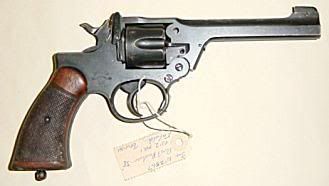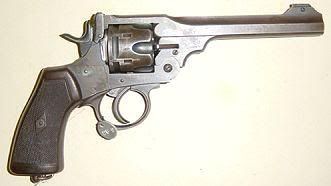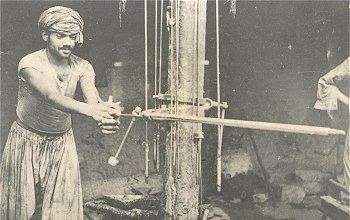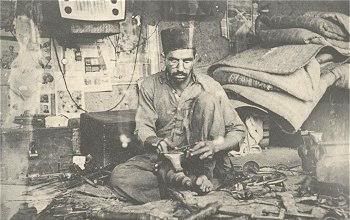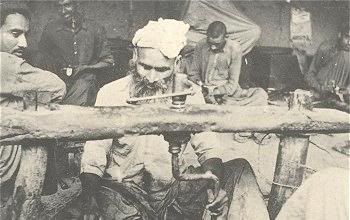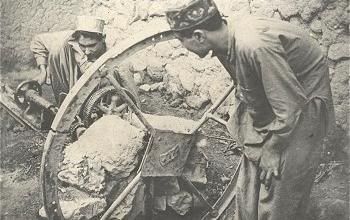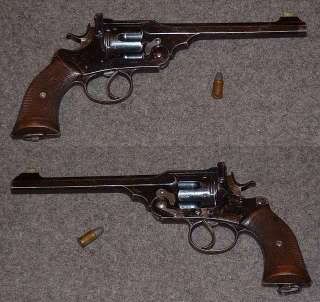Yes, the Webley and Scott company just down the road from me closed its doors for the last time in December 2005. I suppose it is some good news that its airgun and shotgun concerns were taken over by local companies that had been its customers.
More important, perhaps, is the news that that the Webley and Scott firearm archive has been rescued by an organisation which, I understand, plans to make it available to researchers (perhaps on-line) when it is suitably catalogued and organised. I was most concerned that this would be lost when the W&S assets were sold by the Official Receiver earlier this year. It consists of records on manufacturing runs, serial numbers, sales invoices, contract details and engineering drawings for all Marks I - VI going back to WW1. In the past, through a contact, I was able to visit the factory and inspect the old records and I can tell you they make fascinating reading. My notes from such visits include the following manufacturing details of the Birmingham factory:
Manufacturing books of Mark V & Mark VI .455 Revolvers (1914 – 1918)
Manufacturing books of Mark VI & WS .455 Revolvers (1918 – 1940)
Manufacturing book of Mark III .38 Revolvers (1925 – 1942), serial nos. 27800 – 32899
Manufacturing books of Mark IV .38 Revs (1941 – 1964), serial nos. 32900 – 44588
Manufacturing books of Mark IV .32 Revs (1949 – 1969), serial nos. 32900 – 44588
Now, to address Michaelson's point. If I may say, I think you are not so much comparing a .455 with a .38 as a big pistol with a little one. If you were to compare a Mk VI .455 with a Mk III .38 you would see that they are substantially the same, the main difference being in the 'handedness' of the ejector mechanism. This is what is being described in the Home Guard manual I quoted above.
Between WW1 and WW2 Webley made revolvers in two different frame sizes - Mks I - III and Mks V and VI are big ( approx. 1.2 Kg.) and the MKIV is small (approx. 0.9 Kg.) as you say. The MK III came in .38 calibre and had the same frame size as the Mk II, Mk V and Mk VI. It was never adopted by the British Army, although it went on to have a long (if not numerous) career in overseas armies, (particularly on the Indian sub-continent) and as a police and civilian weapon. Here is a commercial ('pocket') version of the MkIII, note the opposite position of the ejector to a Mk VI, but like a MkIV:
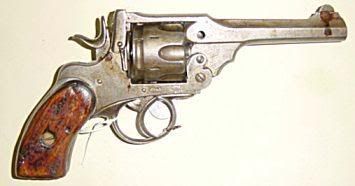
The Mk III was, of course replaced by the Mk IV which was a more sensible size for a .38 and which was developed in conjunction with RSAF Enfield which produced all the early MK IVs at Enfield Lock. Webley did not resume production of its own Mk IV at Birmingham until 1941 (see records above) the British Army having contracted all its .38 pistol production to RSAF between 1932 and 1941. Resuming production of the MIV at Birmingham coincided with the demise of the Mk III, as the Mk IV was a more sensible frame size for a .38. Note that the handing of the ejector on the Mk IV owes more to the Mk III than to the Mk VI, so the common statement that 'the Mk IV is a scaled down version of the Mk VI' is only partly correct. Note also that the Webley Fosbery (for which compete records are available in the Birmingham archive) was available in both .38 and .455 calibres.
Now, back to Canyon's photograph of Captain Jack. You can see the ejector on the left (but not on my old monitor!) so it is possible that it is a 'large' Mk III or a 'small' MkIV, but I will give Michaelson the benefit of the doubt on the frame size and on the barrel length. The photograph was taken with a wide-angle lens to exagerate the actor's pose, and that can give a very distorted impression of size and length. In any case, I bow to Michaelson's superior knowledge of things Webley.
Incidentally, if anyone wants a copy of the manual relating to WW2 Webleys (it is only a couple of pages and is done on a manual typewriter with quite crude line drawings) PM me and I see if I can send you a copy.
Suprisingly, you can still buy a brand-new copy of a Webley MKIII, although I wouldn't recommend it. I travel regularly to northern Pakistan, and in a town near the Afghan border called Darra (where copying guns is a local industry) there is a blacksmiths shop making by hand Webley Mk IIIs complete with fake WS diamonds, Birmingham Proof marks and the /l\ mark. Just don't ask me to bring one back!
Regards!
End of thread, I hope?
Alan















